The Ultimate Guide to Growing Lemon Verbena From Seed
Published: 25 Jun 2024
As a gardening enthusiast, I’ve always been drawn to the allure of homegrown herbs. Lemon verbena is special in my garden and heart. Its vibrant leaves and the citrusy scent that permeates the air around it make lemon verbena not just a plant but a sensory experience.
Today, I’ll share with you the best practices for growing lemon verbena, ensuring that this delightful herb thrives in your garden.
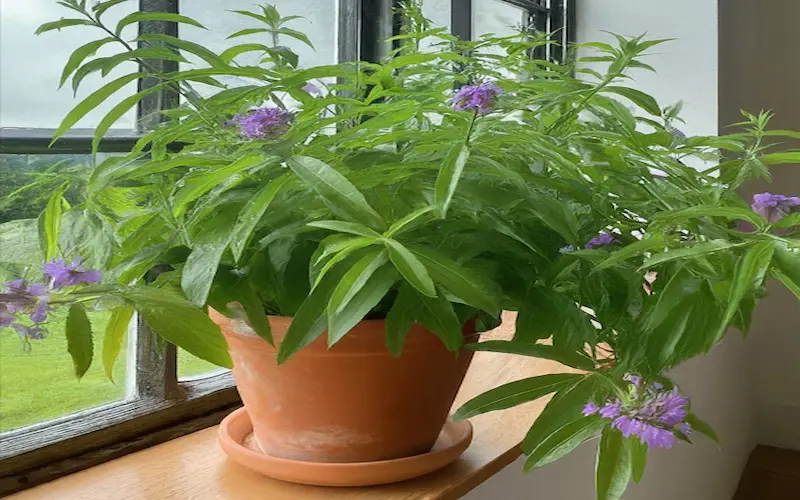
What is Lemon Verbena
Lemon verbena, scientifically known as Aloysia citrodora. It is a perennial shrub native to South America. I was first introduced to this aromatic gem at a local garden club meeting. It is instantly captivated by its strong lemon scent, which is more intense than that of actual lemons.
The plant is characterized by its lance-shaped, glossy leaves and delicate purple or white flowers. In my experience, it can grow up to three meters in ideal conditions, but it remains smaller when cultivated in pots or colder climates. Lemon verbena is deciduous, meaning it will lose its leaves in the winter, yet it comes back to life in spring, more vibrant than ever.
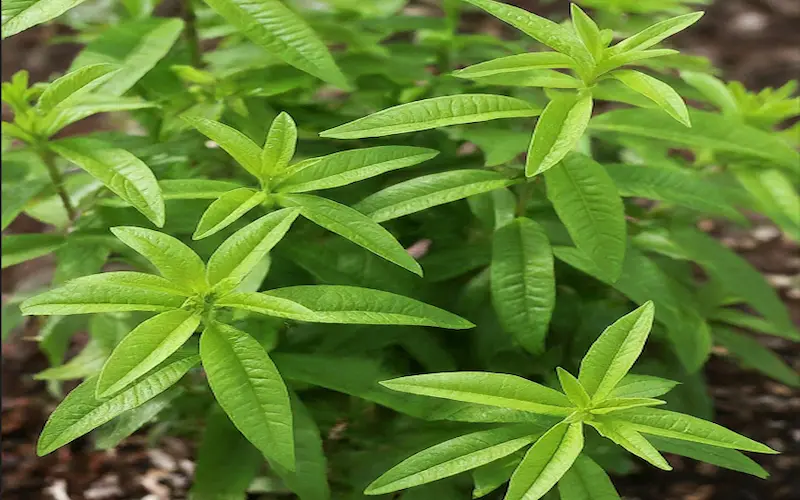
While it is a robust plant, lemon verbena requires specific conditions to flourish. Over the years, I have learned that it loves full sun and well-draining soil, two factors critical to growing this herb successfully. It’s also worth noting that lemon verbena is not just a pretty plant but is also incredibly versatile in its uses, which I will delve into further in this guide.
Benefits of Growing Lemon Verbena
The reasons to grow lemon verbena extend far beyond its pleasant aroma. For starters, it is a beautiful addition to any culinary herb garden. The leaves can be used fresh or dried to flavor fish, poultry, salads, and beverages. As an avid cook, I often use lemon verbena to add a zesty note to my dishes.
Beyond the kitchen, lemon verbena boasts numerous health benefits. It’s been traditionally used to aid digestion, relieve anxiety, and promote sleep. I’ve made teas from its leaves, which have helped me unwind after long days in the garden.
Another benefit I have observed is its attractiveness to pollinators, such as bees and butterflies. The subtle flowers of the lemon verbena are a nectar source for these beneficial insects, which in turn help pollinate the rest of my garden. It’s a symbiotic relationship that enhances the health and beauty of my outdoor space.
Choosing the Right Location and Soil for Lemon Verbena
Right Location
When I first decided to grow lemon verbena, I quickly learned that the location could make or break its success. This plant thrives in full sun, needing at least six to eight hours of direct sunlight per day. In my garden, I chose a spot that gets uninterrupted sun exposure, which has significantly contributed to the lush growth of my plants.
Soil Requirements
The soil is just as important as the location. Lemon verbena prefers well-draining soil to prevent root rot. I always amend the soil with plenty of organic matter and make sure that it’s loose and friable. A pH between 6.5 and 7.5 is ideal for this herb, and I regularly check the soil’s acidity to maintain it within this range.
Site Preparing
Before planting, I prepare the site by removing any weeds and digging in compost or well-rotted manure. This enriches the soil and improves drainage. I also make sure to space the plants about 70-80 cm apart to give them ample room to grow. This has been essential for proper air circulation, which reduces the chance of fungal diseases.
Planting Lemon Verbena from Seeds or Cuttings
Starting from Seeds
Growing lemon verbena from seeds can be a bit challenging, as the germination rate is often low. I’ve found it’s best to start the seeds indoors six to eight weeks before the last expected frost. I use a seed-starting mix and keep the soil moist but not soggy. Patience is critical here, as germination can take anywhere from two to four weeks.
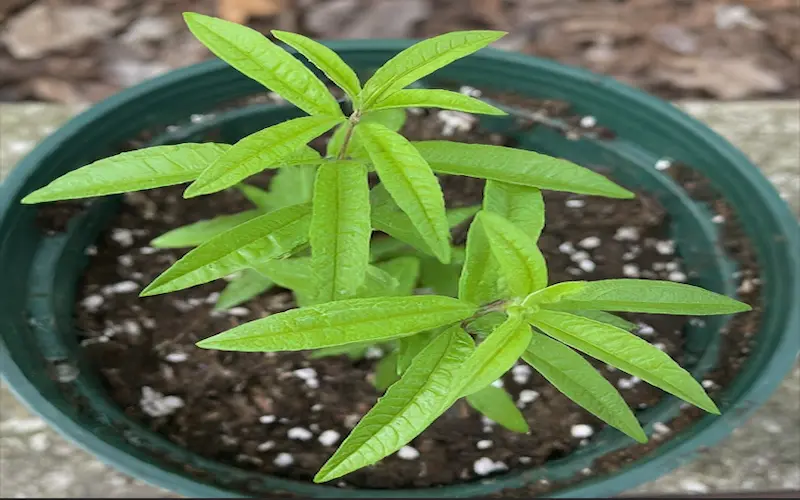
Propagating from Cuttings
A more reliable method, and my preferred one, is propagation from cuttings. In late spring or early summer, I take a 10 to 15-cm cutting from a healthy plant, remove the lower leaves, and dip the cut end in the rooting hormone. Then, I plant the cutting in a pot with moist potting mix and cover it with a plastic bag to create a mini-greenhouse effect. Roots usually develop within a few weeks.
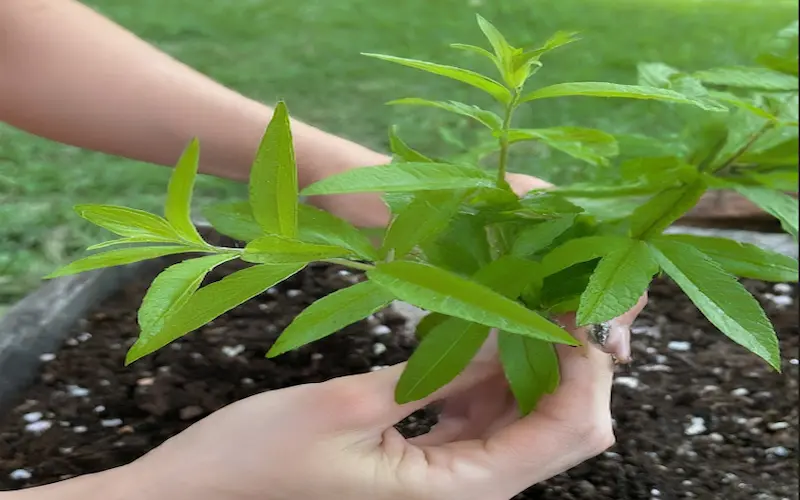
Transplanting to the Garden
Whether you start from seeds or cuttings, the young plants should be hardened off before transplanting them outdoors. I gradually expose them to outdoor conditions over a week to reduce transplant shock. Once the danger of frost has passed, I plant them in their prepared spot, taking care not to disturb the roots.
Watering and Fertilizing Lemon Verbena Plants
Watering Schedule
Watering is crucial, especially in the first year of growth. I keep the soil consistently moist but never soggy. Once established, lemon verbena is relatively drought-tolerant, but I still water it deeply once a week during dry spells.
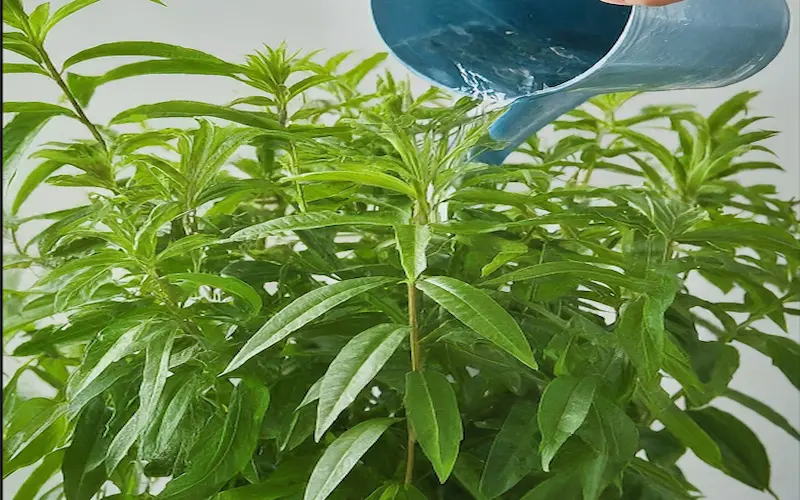
Fertilization Needs
Lemon verbena is not a heavy feeder, but it does benefit from occasional fertilization. I apply a balanced, all-purpose fertilizer in the spring and perhaps once more during the growing season. Too much fertilization can lead to excessive foliage growth at the expense of the aromatic oils, so moderation is key.
Mulching
To conserve moisture and suppress weeds, I apply a layer of organic mulch around the base of my lemon verbena plants. This mulch also provides a slow release of nutrients as it breaks down over time.
Pruning and Maintaining Lemon Verbena
Pruning Techniques
Pruning is an essential part of maintaining a healthy lemon verbena plant. I prune in spring to remove any dead or damaged wood and to shape the plant. This encourages new growth and prevents the plant from becoming too woody.
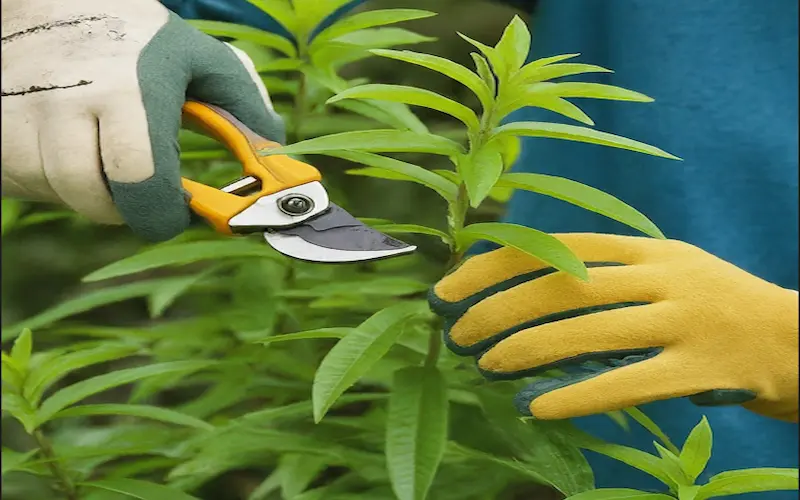
Encouraging Business
To encourage a bushier plant, I pinch back the tips of the branches during the growing season. This stimulates the plant to produce more lateral growth, resulting in a fuller plant with more leaves to harvest.
Winter Care
In colder climates, lemon verbena will die back to the ground in winter. I protect my plants with a thick layer of mulch to insulate the roots. In areas with harsh winters, it may be necessary to grow lemon verbena in pots and bring them indoors during the cold months.
Common Pests and Diseases
Recognizing Problems Early
Lemon verbena is relatively hardy, but like any plant, it can be susceptible to pests and diseases. I look for signs of trouble, such as discolored leaves or stunted growth.
Pests to Watch For
Aphids and spider mites are the most common pests I’ve encountered. They can usually be managed by spraying them with a strong jet of water to knock them off the plant or using insecticidal soap.
Preventing Disease
Fungal diseases can occur, especially in humid conditions. To prevent this, I ensure good air circulation around my plants and avoid overhead watering. If a plant does become infected, I remove and destroy the affected parts and treat the plant with a fungicide suitable for edible plants.
When to Harvest Lemon Verbena
The best time to harvest lemon verbena leaves is in the morning after the dew has dried but before the sun is at its peak. This is when the aromatic oils are most concentrated. I use sharp scissors to snip off what I need, being careful not to overharvest from any one plant.
Preserving the Harvest
To preserve lemon verbena leaves, I either dry them or freeze them. To dry, I lay the leaves in a single layer on a screen in a warm, airy place out of direct sunlight. Once dried, I store them in an airtight container. For freezing, I chop the leaves and place them in ice cube trays topped up with water. Once frozen, the cubes can be added to drinks or thawed for cooking.
Conclusion and Final Tips for Successfully Growing Lemon Verbena
In conclusion, lemon verbena is a delightful and beneficial addition to any garden. By choosing the right location and soil, planting carefully, and providing the right amount of water and nutrients, you can ensure this aromatic herb thrives. Regular pruning and vigilance against pests and diseases will keep your plants healthy and productive.
As you embark on your journey to grow lemon verbena, I encourage you to experiment with its uses and enjoy the vibrant flavor and aroma it brings to your life.

- Be Respectful
- Stay Relevant
- Stay Positive
- True Feedback
- Encourage Discussion
- Avoid Spamming
- No Fake News
- Don't Copy-Paste
- No Personal Attacks



- Be Respectful
- Stay Relevant
- Stay Positive
- True Feedback
- Encourage Discussion
- Avoid Spamming
- No Fake News
- Don't Copy-Paste
- No Personal Attacks



